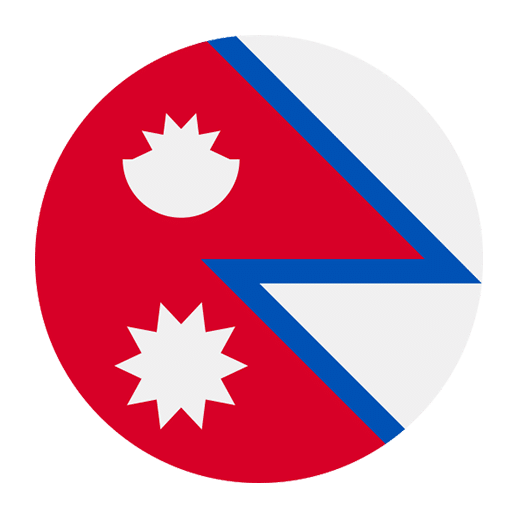Nepali literature is a rich and diverse field that offers a unique glimpse into the culture, history, and social dynamics of Nepal. For English speakers interested in expanding their literary horizons, understanding Nepali literature can provide a deeper connection to the nuances of Nepali society and its linguistic heritage. This article will explore the various forms of Nepali literature, from its ancient roots to contemporary expressions, and highlight key authors and works that have shaped this vibrant literary tradition.
Historical Context of Nepali Literature
Nepali literature has a long and storied history that dates back to ancient times. It has evolved through various stages, each marked by significant socio-political and cultural changes. The earliest forms of Nepali literature were deeply intertwined with religious texts and oral traditions.
Ancient and Medieval Literature
The earliest known Nepali literary works were composed in Sanskrit, the classical language of Hindu scriptures. These texts were primarily religious and philosophical, reflecting the spiritual life of the region. One of the earliest known Nepali poets is Bhanubhakta Acharya, who translated the Ramayana from Sanskrit to Nepali in the 19th century. His translation not only made the epic accessible to the Nepali-speaking populace but also marked the beginning of a distinct Nepali literary tradition.
During the medieval period, Nepali literature was heavily influenced by the Bhakti movement, which emphasized personal devotion to deities and the expression of religious sentiments through poetry and songs. This period saw the rise of many devotional poets who composed hymns and prayers in Nepali, further enriching the literary landscape.
Modern Era
The modern era of Nepali literature began in the late 19th and early 20th centuries, coinciding with the rise of nationalism and the struggle for independence from British colonial rule in neighboring India. This period saw the emergence of new literary forms and genres, including novels, short stories, and essays. Writers began to explore themes of social justice, political freedom, and individual identity, reflecting the changing socio-political landscape of Nepal.
Forms of Nepali Literature
Nepali literature encompasses a wide range of forms, each with its own unique characteristics and contributions to the literary tradition. Here are some of the most prominent forms:
Poetry
Poetry has always been a cornerstone of Nepali literature. From ancient religious hymns to modern free verse, Nepali poetry has evolved to reflect the changing times and sensibilities of its people.
Classical Poetry
Classical Nepali poetry is characterized by its adherence to traditional forms and meters. Poets like Bhanubhakta Acharya and Motiram Bhatta are known for their works in classical meters, which often explore themes of devotion, morality, and nature.
Modern Poetry
The advent of modern poetry in Nepal brought a shift towards free verse and experimentation with new forms. Poets like Laxmi Prasad Devkota, regarded as the “Mahakavi” (Great Poet) of Nepali literature, introduced new themes and styles that broke away from classical conventions. Devkota’s epic poem “Muna Madan,” which tells the tragic love story of a young couple, remains one of the most beloved works in Nepali literature.
Prose
Prose literature in Nepal includes a variety of genres such as novels, short stories, essays, and travelogues. This form of literature gained prominence in the early 20th century and has since become a major part of the Nepali literary canon.
Novels
The Nepali novel has evolved significantly over the past century. Early novels were often didactic, focusing on social issues and moral lessons. However, contemporary Nepali novels explore a wide range of themes, including love, identity, politics, and the human condition. Notable novelists include Parijat, whose novel “Shirishko Phool” (The Blue Mimosa) is a poignant exploration of love and loss, and Bishweshwar Prasad Koirala, whose works often delve into political and social issues.
Short Stories
Short stories have a special place in Nepali literature, offering writers a concise medium to explore complex themes and emotions. Writers like Guru Prasad Mainali and Lekhnath Paudyal have made significant contributions to this genre. Mainali’s collection “Naso” is considered a classic, capturing the essence of rural Nepali life through its vivid characters and compelling narratives.
Drama
Drama is another important form of Nepali literature, with a rich tradition of both classical and modern plays. Theatrical performances have long been a part of Nepali culture, often used to convey religious stories and moral lessons.
Classical Drama
Classical Nepali drama was heavily influenced by Sanskrit theatre and often revolved around mythological and religious themes. These plays were typically performed during festivals and religious ceremonies, serving both as entertainment and as a means of reinforcing cultural values.
Modern Drama
Modern Nepali drama began to take shape in the early 20th century, with playwrights experimenting with new themes and forms. Bal Krishna Sama is one of the most prominent figures in modern Nepali drama, known for his plays that address social issues and explore the human psyche. His play “Mukunda Indira” is a landmark in Nepali theatre, depicting the struggles of individuals against societal norms.
Essays and Non-Fiction
Essays and non-fiction writing in Nepali literature cover a broad spectrum of subjects, from personal reflections and social commentary to historical analysis and travel narratives.
Essays
Essays have been a popular form of expression for Nepali writers, allowing them to delve into a wide range of topics and share their perspectives with readers. Writers like Laxmi Prasad Devkota and Mahakavi Laxmi Prasad Devkota have made significant contributions to this genre, offering insightful commentary on various aspects of Nepali society and culture.
Non-Fiction
Non-fiction writing in Nepali literature includes biographies, autobiographies, and historical accounts. These works provide valuable insights into the lives of notable figures and the historical events that have shaped Nepal. Notable non-fiction writers include Yadav Kharel and Rishikesh Shaha, whose works have contributed to a deeper understanding of Nepali history and politics.
Influential Nepali Writers
Nepali literature has been shaped by the contributions of numerous talented writers, each bringing their unique voice and perspective to the literary tradition. Here are some of the most influential figures:
Bhanubhakta Acharya
Often referred to as the “Adikavi” (First Poet) of Nepali literature, Bhanubhakta Acharya is best known for his translation of the Ramayana into Nepali. His work made the epic accessible to the Nepali-speaking populace and laid the foundation for the development of a distinct Nepali literary tradition.
Laxmi Prasad Devkota
Laxmi Prasad Devkota is one of the most celebrated figures in Nepali literature. His contributions to both poetry and prose have left an indelible mark on the literary landscape. Devkota’s works often explore themes of love, nature, and human suffering, reflecting his deep empathy and understanding of the human condition.
Parijat
Parijat, whose real name was Bishnu Kumari Waiba, is best known for her novel “Shirishko Phool” (The Blue Mimosa). Her writing is characterized by its emotional depth and exploration of complex psychological and social issues. Parijat’s works have had a profound impact on modern Nepali literature, inspiring many contemporary writers.
Bishweshwar Prasad Koirala
Bishweshwar Prasad Koirala, also known as B.P. Koirala, was not only a prominent political figure but also a significant literary voice. His novels and short stories often delve into political and social themes, reflecting his deep engagement with the issues of his time. Koirala’s literary works continue to be relevant and widely read in Nepal.
Challenges and Opportunities in Nepali Literature
Like any literary tradition, Nepali literature faces its own set of challenges and opportunities. Understanding these can provide a deeper appreciation of the efforts made by writers and the resilience of the literary community.
Language and Accessibility
One of the primary challenges for Nepali literature is language and accessibility. While Nepali is the official language of Nepal, the country is home to numerous languages and dialects. This linguistic diversity can make it challenging for writers to reach a broad audience. Additionally, the limited availability of translated works in other languages, including English, can hinder the global reach of Nepali literature.
Publishing and Distribution
The publishing industry in Nepal faces several challenges, including limited resources, infrastructure, and distribution networks. These factors can make it difficult for writers to get their works published and reach a wider audience. However, the rise of digital platforms and self-publishing has opened up new opportunities for writers to share their work with the world.
Preservation of Oral Traditions
Nepal has a rich tradition of oral literature, including folk tales, songs, and proverbs. Preserving these oral traditions in written form is a significant challenge, as it requires careful documentation and translation. Efforts are being made by scholars and cultural organizations to preserve and promote these traditions, ensuring that they continue to be a part of the Nepali literary heritage.
The Future of Nepali Literature
Despite the challenges, the future of Nepali literature looks promising. The literary community in Nepal is vibrant and dynamic, with new voices emerging and pushing the boundaries of traditional forms and themes.
Emerging Writers
A new generation of Nepali writers is making its mark on the literary scene, bringing fresh perspectives and innovative styles to the forefront. These writers are not only exploring contemporary issues but also experimenting with new forms of expression, including digital and multimedia storytelling. Their work is contributing to the continued evolution and diversification of Nepali literature.
Global Recognition
Nepali literature is gradually gaining recognition on the global stage, with translations of Nepali works becoming more widely available. International literary festivals and collaborations are providing platforms for Nepali writers to share their work with a broader audience. This increased visibility is helping to raise awareness of the richness and diversity of Nepali literature.
Preservation and Promotion
Efforts to preserve and promote Nepali literature are ongoing, with initiatives aimed at documenting oral traditions, supporting local writers, and encouraging literary education. Cultural organizations, literary festivals, and academic institutions are playing a crucial role in fostering a thriving literary community and ensuring that Nepali literature continues to flourish.
Conclusion
Understanding Nepali literature and its various forms offers a unique window into the cultural and social fabric of Nepal. From ancient religious texts and classical poetry to modern novels and essays, Nepali literature is a testament to the rich and diverse heritage of the Nepali people. As the literary landscape continues to evolve, new voices and perspectives will undoubtedly emerge, further enriching this vibrant tradition. For English speakers, exploring Nepali literature can be a rewarding journey that deepens their appreciation of Nepal’s unique cultural identity and its contributions to the world of literature.

